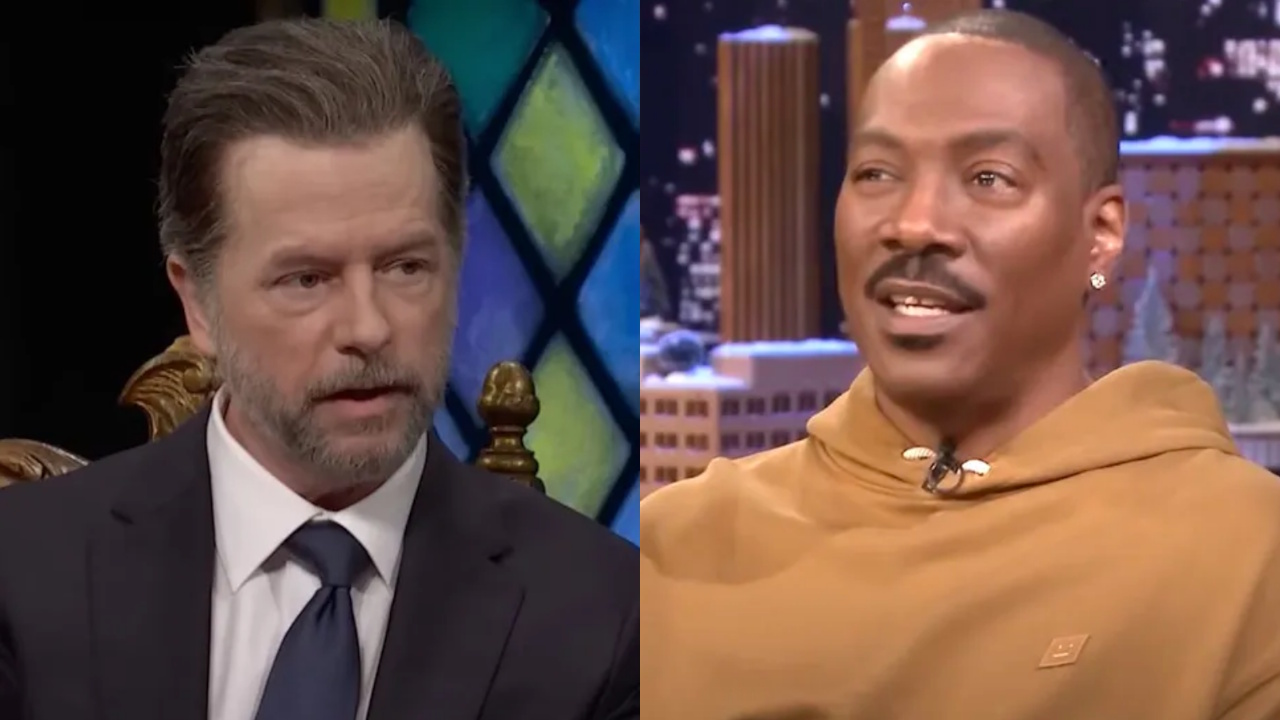There are some movies that you’re ready to have end, and others that leave you wanting more. After the original Blade I felt my interest in the character was done, despite the studio’s insistence on making a sequel. After Blade II I was ready for more, eager for yet another movie. Regardless of that, Blade: Trinity doesn’t quite quench the thirst for more bloodsucker-fighting action I had in mind. The first Blade film saw the vampire hunter fighting - what else - vampires. For the second go round, Blade descended to a darker level, fighting alongside his prey against Reapers, more powerful vampires that fed on vampire blood. At first coming up with something to outdo that would seem difficult, but one only has to look as far as comics, books, and even “Buffy the Vampire Slayer” in order to find the perfect foe for Blade: the king of all vampires himself, Dracula. Along the way Blade teams up with a new bunch of vampire hunters called, “The Nightstalkers”.
Blade: Trinity, and the Blade franchise as a whole, is best compared to the Mad Max trilogy. The first film laid down the rules for what we were watching, the second film got darker and expanded on the themes of the first film, and the third film sees the hero baby-sitting a bunch of kids while beating up a retarded behemoth. Despite trying to make “the Nightstalkers” a tough ragtag group of fighters, they seem more like kids you’d see shopping at Abercrombie & Fitch, and while they manage to hold their own in combat at times, you get the feeling they survive only because Blade is around. And even though the film introduces quite a few new characters and groups, Blade: Trinity doesn’t feel like it expands much on the first two films. In fact, after the darker story told in Blade II it almost feels like the movie is a happy-happy joy-joy romp in a previously god-forsaken world.
A lot of people would be quick to point the finger of blame at new director David Goyer, who scribed all three Blade movies but only started directing with Trinity. The truth is, Goyer’s direction is not all bad. Sure, the movie uses every visual trick in the book between (and including) fast motion and slow motion camera shots, but worse has been seen in a Uwe Boll film. Goyer has at least had the decency to remove a lot of the rotten CGI effects that plagued the first two films, relying more on practical effects then the use of CGI to save the film.
Others would blame all the new blood the movie has, from the yummy Jessica Biel as Abigail Whistler (daughter of Blade’s dead, then resurrected, then newly killed partner) to the massive frame of wrestler “Triple H” as a cowardly sissy vampire. Sure the movie contains comedian Patton Oswalt as the techno-savvy Nightstalker and Ryan Reynolds’ ever delightful patter is a bit lighter then what we’re used to in a Blade film, but even that isn’t part of the problem. In fact, Reynolds’ nonstop wisecracks help make the movie’s drudgery a bit more tolerable.
No, in the end it’s not new blood or a new director that causes the downfall of Blade: Trinity, instead it’s just a lack of new ideas. No offense to the Nightstalkers, but Blade teamed up with a bigger, badder team of hunters in Blade II - given, they were vampires rather than vampire hunters, but still, any team with Ron Perlman is going to be a hard one to top, and Biel and Reynolds just don’t do it. The vampire instigating the threat here, Danica Talos (Parker Posey) is a poor woman’s Deacon Frost (from Blade), putting Blade up against Dracula, an opponent that has been portrayed in too many different ways to make him so listless here. Even the threat of losing Blade’s partner Whistler seems unimportant considering they’ve already killed and revived the old man before. Blade himself seems just as unexcited as his opponent, being lead around by his newfound wards from fight to fight, but not really seeming vested in any of them.
There have been rumors that Trinity will lead to a spin off for the Nightstalkers and while I’m still open to the idea, I’m not jumping up and down with joy at the concept. The Nightstalkers are hardly a part of the world of darkness the Blade films originally gave birth to, although they might be able to give Buffy and her scooby-gang a run for their money. The first two Blade films saw great DVD releases with all kinds of bonus materials. Blade: Trinity is no different, with a two disc set that offers two different versions of the film, an almost two hour long making-of documentary, two commentary tracks, and even a comic book packed in with the discs for your reading pleasure. As always, New Line Home Entertainment presents the DVDs without any sort of commercials or advertisements at the beginning, letting you get right to the material on the discs themselves.
One word of warning: the packed in comic book contains hefty spoilers in it’s interpretation of events that are alluded to in the movie, but not actually seen. Anyone who is watching the movie for the first time might want to steer clear of the comic until after watching the movie, then enjoy it.
Your Daily Blend of Entertainment News
Both the theatrical version and an extended unrated edition of the film are included on the set’s first disc. The extended edition really doesn’t add much to the movie, with ten minutes of extra material that are pretty much just added in here and there throughout the entire movie. The only significant difference is the ending, which is altered from the theatrical version. Personally I preferred the original theatrical ending which seemed more in line with the movie than the unrated ending which felt like a tacked on monologue. It’s amazing what changing a few words around can do. Both are vast improvements over yet another alternate ending which can be found on the second disc, which shows Reynolds and Biel hunting another creature after the events of Trinity. It should be noted that only the unrated version of the film has scene selection and commentary tracks, so if you want to watch the theatrical version you’re going to have to skip from chapter to chapter manually.
The second disc contains all of the behind the scenes footage including a hilarious outtake reel where Reynolds’ ability to ad lib is really showcased, along with evidence that Biel really learned to shoot her character’s bow. Also included is the featurette “Goyer on Goyer” as David Goyer the writer interviews Goyer the director. It’s not anywhere near as bad as it sounds, and actually gets a lot of information out of the interviews. Perhaps more films with writer/directors should try the same trick.
The centerpiece of the second disc is the documentary, “Daywalkers, Nightstalkers, & Familiars: Inside the World of Blade: Trinity", an almost two hour look at the making of the film, from casting to filming to the process of special effects. Just about everyone involved with the film chimes in here, surprisingly including Wesley Snipes (given his absence in almost every other part of the discs, as well as his recent lawsuit against New Line ,claiming he didn’t get approval of the final edit, it’s nice to see Snipes had something nice to say about the film). The documentary just reinforces what I said about Goyer above - as a director he’s not bad, and in some ways he even managed to improve the franchise in ways the directors of the first two movies couldn’t.
Blade: Trinity isn’t a horrible movie, but it’s certainly the weakest of the Blade trilogy. It’s still worth watching though, if only for Ryan Reynolds’ constant one-liners. Sure, it might be worth having something else to help keep you entertained, like a deck of cards for solitaire or a Game-Boy, to get you through the slower moments of the film. At least the DVD package as a whole is worthwhile though.

